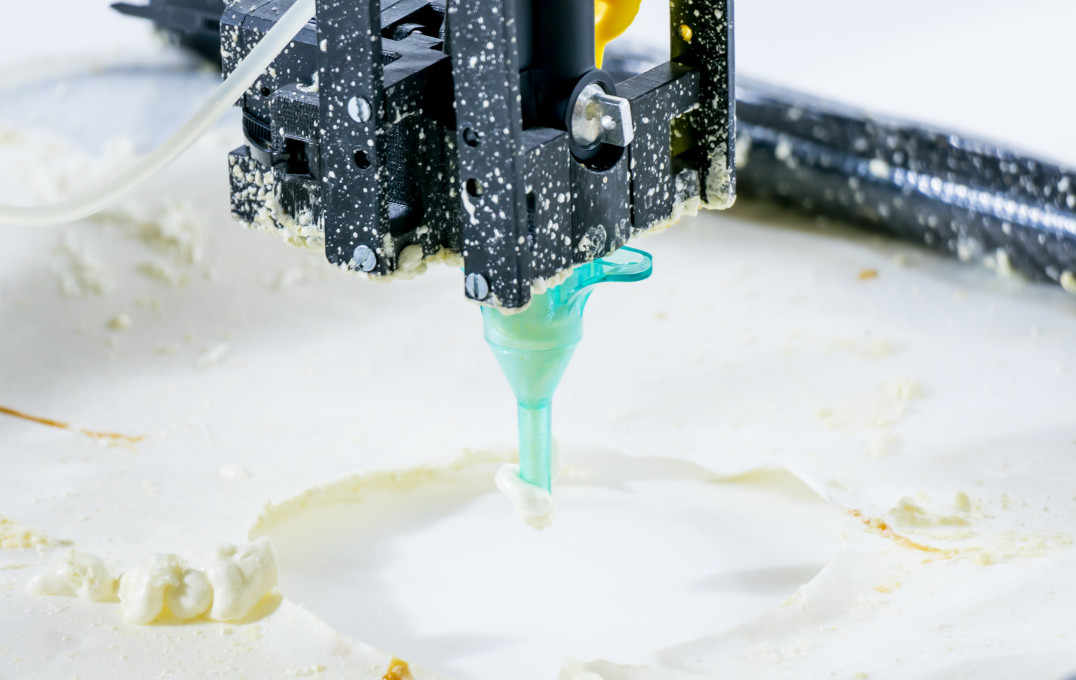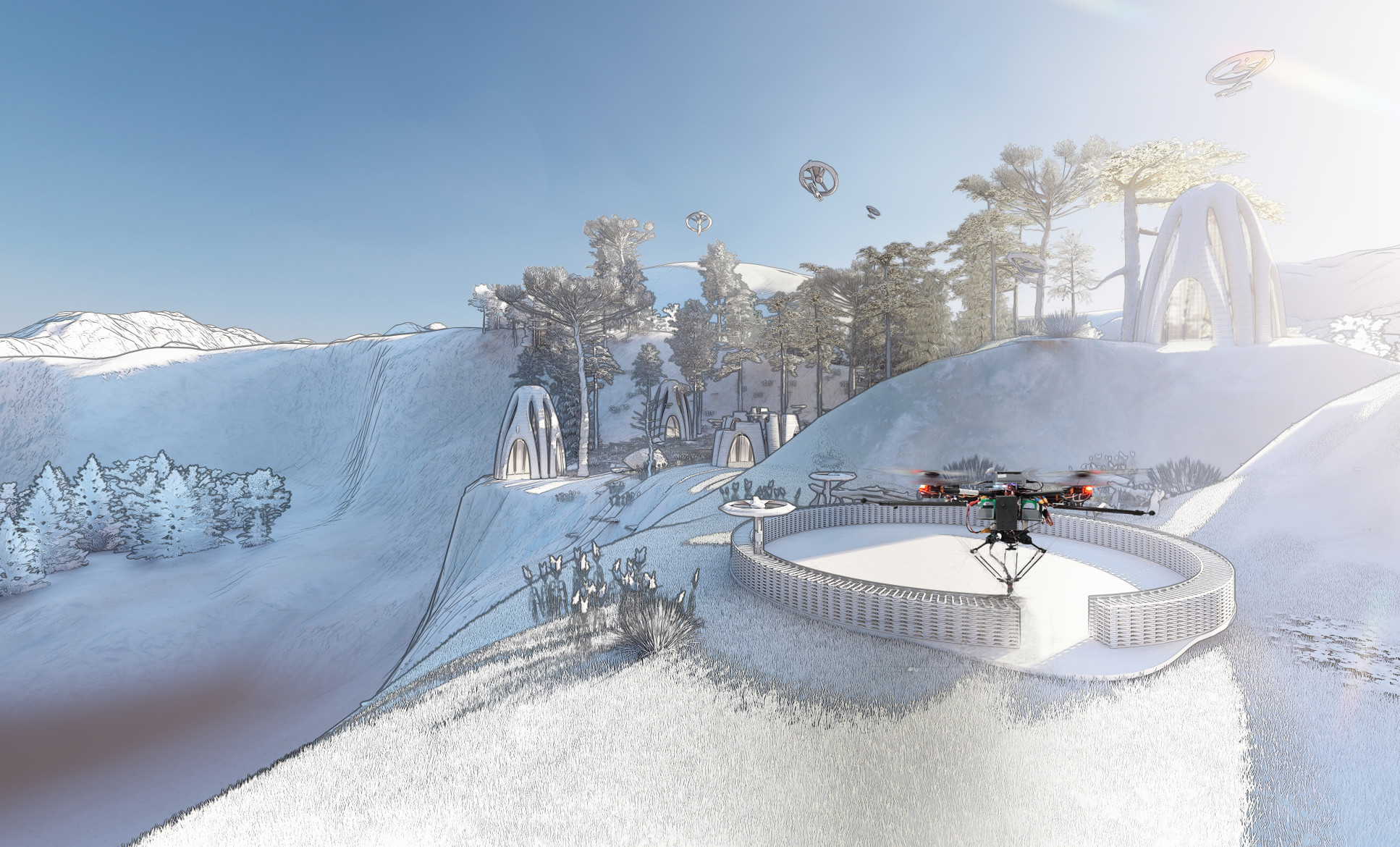3D printing drones work like bees to build and repair structures while flying | Imperial News
GoogleAds

Imperial College London and Empa researchers have created a fleet of bee-inspired flying 3D printers for building and repairing structures in-flight.
The technology could ultimately be used for manufacturing and building in difficult-to-access or dangerous locations such as tall buildings or help with post-disaster relief construction, say the researchers, who publish their work in Nature.
We’ve proved that drones can work autonomously and in tandem to construct and repair buildings, at least in the lab. Professor Mirko Kovac Department of Aeronautics & Empa
3D printing is gaining momentum in the construction industry. Both on-site and in the factory, static and mobile robots print materials for use in construction projects, such as steel and concrete structures.
This new approach to 3D printing uses flying robots, known as drones, that use collective building methods inspired by natural builders like bees and wasps.
The drones in the fleet, known collectively as Aerial Additive Manufacturing (Aerial-AM), work co-operatively from a single blueprint, adapting their techniques as they go. They are fully autonomous while flying but are monitored by a human controller who checks progress and intervenes if necessary, based on the information provided by the drones.
View embedded Giphy content
Lead author Mirko Kovac, Professor at Imperial’s Department of Aeronautics and Head of Empa’s Materials and Technology Center of Robotics, said: “We’ve proved that drones can work autonomously and in tandem to construct and repair buildings, at least in the lab. Our solution is scalable and could help us to construct and repair building in difficult-to-reach areas in the future.”

BuilDrones (R) 3D print their material during flight, and ScanDrones (L) continuously measure their output for quality control.
Printing 3D geometries
Aerial-AM uses both a 3D printing and path-planning framework to help the drones adapt to variations in geometry of the structure as a build progresses. The fleet consists of BuilDrones, which deposit materials during flight, and quality-controlling ScanDrones that continually measure the BuilDrones’ output and inform their next manufacturing steps.
“Our fleet of drones could help reduce the costs and risks of construction in the future, compared to traditional manual methods.” Professor Mirko Kovac Department of Aeronautics & Empa
To test the concept, the researchers developed four bespoke cementitious mixtures for the drones to build with.
Throughout the build, the drones assessed the printed geometry in real time and adapted their behaviour to ensure they met the build specifications, with manufacturing accuracy of five millimetres.
The proof-of-concept prints included a 2.05-metre high cylinder (72 layers) with a polyurethane-based foam material, and an 18-centimetre high cylinder (28 layers) with a custom-designed structural cementitious material.

The ScanDrone’s camera

The BuilDrone’s nozzle
The technology offers future possibilities for building and repairing structures in tall or other hard-to-access locations. Next, the researchers will work with construction companies to validate the solutions and provide repair and manufacturing capabilities.
Professor Kovac said: “We believe our fleet of drones could help reduce the costs and risks of construction in the future, compared to traditional manual methods.”

A simulation of potential future building projects. Credit: Autonomous Manufacturing Lab, UCL
Co-investigators include Robert Stuart-Smith, Stefan Leutenegger, Vijay Pawar, Richard Ball, Chris Williams and Paul Shepherd, and their research  teams at UCL, University of Bath, University of Pennsylvania, Queen Mary University of London, and Technical University of Munich (TUM). It was launched by Assistant Professor Stuart-Smith at UCL and University of Pennsylvania and Professor Kovac at Imperial and Empa after a pilot research collaboration and award for a demonstration on pipeline repair.
teams at UCL, University of Bath, University of Pennsylvania, Queen Mary University of London, and Technical University of Munich (TUM). It was launched by Assistant Professor Stuart-Smith at UCL and University of Pennsylvania and Professor Kovac at Imperial and Empa after a pilot research collaboration and award for a demonstration on pipeline repair.
This work was funded by the Engineering and Physical Sciences Research Council (part of UKRI), the Royal Society, the European Commission’s Horizon 2020 Programme, Royal Thai Government Scholarship and a University of Bath Research Scholarship. The project is also supported by Industrial Partners Skanska, Ultimaker, Buro Happold, and BRE.
“Aerial Additive Manufacturing with Multiple Autonomous Robots” by Zhang et al., published 21 September 2022 in Nature.

The drones could be used to help building projects in hard-to-access locations
Credit: Videos taken at the Imperial College London Aerial Robotics Laboratory by all partners (Imperial College London, University College London, University of Bath).

The research is featured on the cover of Nature’s September edition
See the press release of this article
Source : https://www.imperial.ac.uk/news/239973/3d-printing-drones-work-like-bees/
Auteur :
Date de Publication : 2022-09-21 09:00:00
Le droit d’auteur pour le contenu syndiqué appartient à la source liée.
GoogleAds




